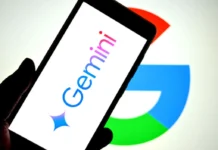Comparison of Display Technologies
CRT (Cathode Ray Tube)
CRT displays use electron beams to excite phosphors on the screen. These were common in old TVs and computer monitors.
Pros: Great color and motion performance, deep blacks.
Cons: Bulky, heavy, high power usage.
Uses: Legacy computer setups, retro gaming.
LCD (Liquid Crystal Display)
LCDs use a backlight and liquid crystals to control light. The crystals align to let different amounts of light through.
Pros: Lightweight, low power, cheap.
Cons: Limited contrast, narrow viewing angles.
Uses: TVs, monitors, laptops, phones.
LED (Light Emitting Diode)
LED displays are LCDs with LED backlighting instead of fluorescent.
Pros: Thinner, more energy-efficient, brighter than older LCDs.
Cons: Still suffers from backlight bleeding.
Uses: TVs, laptops, signage.
TFT (Thin Film Transistor) LCD
A type of LCD using transistors for each pixel, offering better response times.
Pros: Fast refresh, clear text/images.
Cons: TN versions have poor color angles.
Uses: Monitors, medical displays, phones.
OLED (Organic LED)
OLEDs emit their own light per pixel. No backlight needed.
Pros: True black, thin design, vibrant colors.
Cons: Expensive, burn-in risk.
Uses: Premium TVs, smartphones, tablets.
QLED (Quantum Dot LED)
QLED adds a Quantum Dot layer to LED displays for better color.
Pros: High brightness, good for bright rooms.
Cons: Not self-lit like OLED.
Uses: High-end TVs (Samsung, TCL).
MicroLED
A new tech using microscopic self-emitting LEDs.
Pros: Perfect blacks, no burn-in, ultra-bright.
Cons: Currently very expensive.
Uses: Future high-end TVs.
Mini-LED
Backlight tech using many tiny LEDs for better local dimming.
Pros: Better contrast than traditional LED, no burn-in.
Cons: Not true black like OLED.
Uses: Newer Apple products, TVs.
Plasma Display
Each pixel contains gas that lights up when charged.
Pros: Smooth motion, great contrast.
Cons: Heavy, power-hungry, phased out.
Uses: Discontinued, used in older HD TVs.
HDR (High Dynamic Range)
Not a display type but a feature. Enhances contrast and color.
Types: HDR10 (standard), HDR10+, Dolby Vision (dynamic), HLG (broadcast).
Pros: Better realism in scenes.
Cons: Requires HDR-capable content and hardware.
Projectors (DLP, LCD, LCoS)
Projectors cast images using various tech. DLP uses mirrors, LCD uses panels, LCoS combines both.
Pros: Huge screen, portable.
Cons: Needs dark room, lower contrast.
Uses: Classrooms, home theater, cinema.
Written by: Muhammad Imran Hussain Khan | www.imran.xyz











